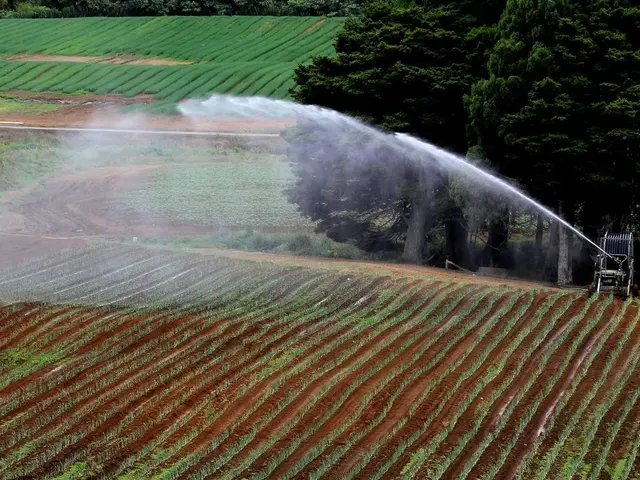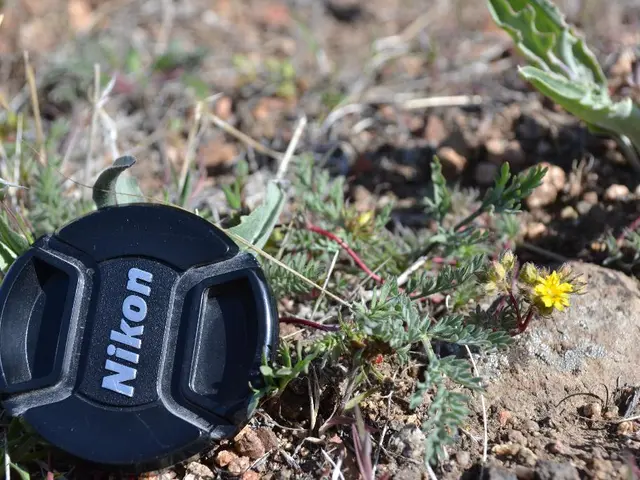Cultivating Watermelons in Your Home Garden's Green Space
Watermelons (Citrullus lanatus), a beloved summer fruit and member of the Cucurbitaceae family, can be grown successfully in your home garden with the right care and attention. Here are some tips and techniques to help you grow healthy, sweet, and juicy watermelons.
Site Requirements -----------------
Watermelons thrive in full sun exposure, ideally receiving 8-10 hours of direct sunlight daily. The soil should be well-drained with a pH between 6.0 and 7.0. Enrich the soil by mixing in compost or aged manure 2-3 weeks before planting, but avoid fresh manure to prevent root burn. Watermelons are sprawling vines that need space, so plant seeds or seedlings 3-4 feet apart in mounds.
Planting ---------
You can start seeds indoors 6-8 weeks before the last frost, keeping them moist in a warm, sunny location. Alternatively, in warm climates, sow seeds directly into the soil about 1 inch deep, spacing 3-4 feet apart on mounds to improve drainage and warmth. Seed germination requires soil temperatures between 26°C-33°C, with night temperatures not lower than 25°C, and ideal growth temperatures are 18°C-31°C with ripening temperatures 16°C-26°C.
Care ----
Watermelons need consistent moisture, especially during flowering and fruit set. Avoid waterlogging. Regular feeding with a balanced fertilizer supports vigorous growth, and mulching helps retain moisture and control weeds. On small plots or balconies, consider containers or trellising to manage vine spread.
Harvesting and Storage ----------------------
Watermelons are ripe when the tendril nearest the fruit dries up, the spot touching the soil turns yellow, and the fruit sounds hollow when tapped. Store harvested melons in a cool place or refrigerate to maintain freshness.
Potential Problems -------------------
Watch for fungal diseases such as anthracnose, caused by pathogens like *Colletotrichum fructicola*, which can affect watermelon plants. Common pests include aphids and cucumber beetles; maintain plant health with proper spacing and monitoring.
Recommended Cultivars ---------------------
For home gardens, choose varieties suited to your growing season length and space. Traditional seeded varieties often have better flavor than seedless types. Look for solid green, seed-bearing cultivars with a reputation for sweetness. Examples include 'Sugar Baby,' 'Crimson Sweet,' and heirloom types which produce juicy, sweet melons reminiscent of classic watermelons.
Summary Table -------------
| Aspect | Recommendations | |------------------|-------------------------------------------------| | Sunlight | Full sun, 8–10 hours daily | | Soil | Well-drained, pH 6.0-7.0, enriched with compost | | Planting Depth | 1 inch (2.5 cm) deep seeds; spacing 3-4 ft apart | | Temperature | Germination: 26-33°C; Growth: 18-31°C | | Watering | Consistent, avoid waterlogging | | Disease Control | Monitor for fungal diseases like anthracnose | | Recommended Cultivars | 'Sugar Baby,' 'Crimson Sweet,' heirloom seed types |
By following these guidelines, you can grow healthy, sweet, and juicy watermelons right in your home garden or even containers on a balcony. Happy gardening!
- In addition to watermelons, incorporating trees, flowers, lawn, and other plants into your home-and-garden could benefit from the tips presented for watermelon growth, as they also thrive in well-drained soil and full sun exposure.
- To complement your watermelon harvest, try cooking recipes that feature food-and-drink components such as watermelon salads, smoothies, or pickles, expanding your lifestyle and introducing new flavors to your meals.
- Maintaining a healthy garden requires regular care, including controlling weeds, as they compete with your plants for nutrients in the soil and can lead to diseases when left unchecked.
- Keep in mind that watermelons can be affected by fungal diseases such as anthracnose, and other plants in your home-and-garden might be susceptible to similar diseases, requiring you to use extension services to learn about disease identification and prevention techniques.
- To save space in your home-and-garden, explore gardening options like using trellises to grow your plants vertically, allowing for more efficient use of your soil and growing area, especially on balconies or small plots.
- As you nurture your watermelons and other plants, consider adopting sustainable gardening practices, such as recycling organic waste and incorporating compost into your soil, to contribute to a healthier environment and reduce your carbon footprint.
- Lastly, gardening not only provides delicious, home-grown produce but also fosters tranquility and promotes mental well-being, making it an enriching addition to your overall lifestyle. Enjoy the rewards of your green thumb!




